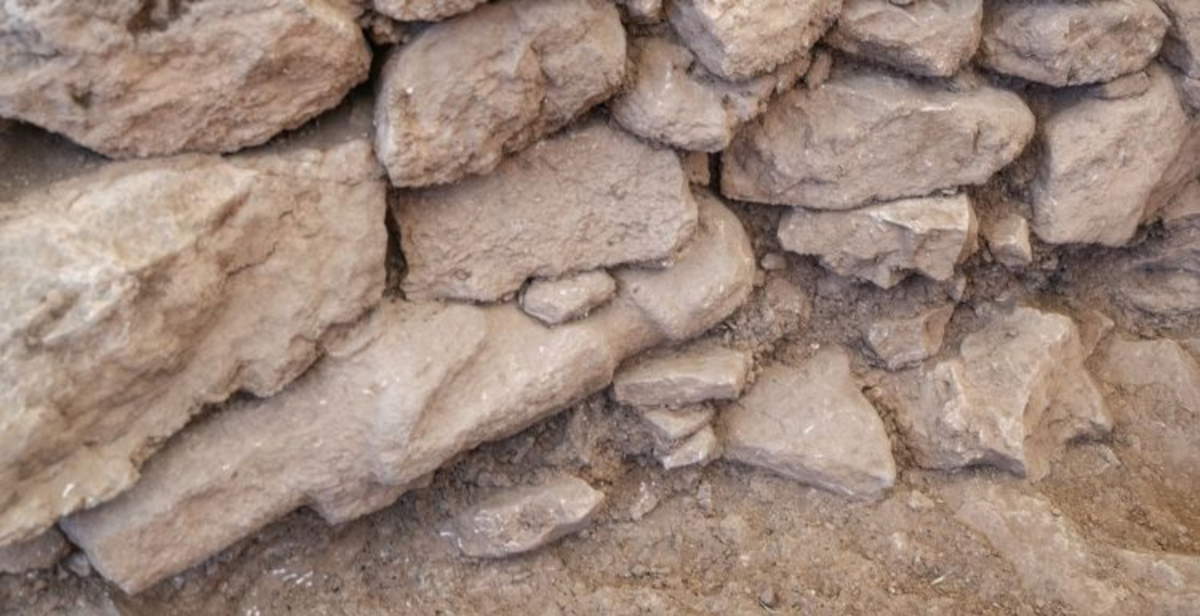A human statue from the Neolithic period, placed for centuries horizontally between two of the main structures at the Göbeklitepe archaeological site, has been unearthed after years of work on the archaeological site in Şanlıurfa province, southeastern Turkey. The announcement came Sept. 19 from Culture and Tourism Minister Mehmet Nuri Ersoy at a ceremony also attended by Japan’s Princess Akiko Misaka, who was on an official visit. According to initial assessments, the sculpture may have had a votive function, opening up new insights into the rituals and belief system of the Neolithic communities that inhabited the area more than 10,000 years ago.
Göbeklitepe, a site that entered the UNESCO World Heritage List in 2018, continues to reveal new information about the Neolithic period and the social organization of hunter-gatherer communities. At the site, among the oldest known human settlements, the restoration of Structure C, the largest building in the complex, where six-meter-high obelisks weighing several tons are located, has also been completed. In his speech, Ersoy defined Göbeklitepe as the common memory not only of Anatolia but of all humanity, stressing that the responsibility for its protection and transmission to the future must be shared.

“It is the responsibility of all of us to protect this heritage and pass it on to the future,” Ersoy argues. "Between structures B and D, in one room, inside a wall, a human statue was found arranged horizontally, attached to the wall and placed for votive purposes. Thanks to the Heritage to the Future project, we do not limit ourselves to excavations, but restore and protect the structures brought to light and entrust them to future generations."
Structure C, discovered sixty-two years ago and the subject of systematic excavations since 1995, underwent extensive restoration work as part of the Heritage to the Future project. The work included moving the obelisks to their original positions, consolidating the walls and using a joint mortar made from goat hair, a material chosen for its conformity with the building techniques of the time.

During the ceremony, Ersoy also announced the opening of new infrastructure to support the archaeological site. A visitor center, parking lot, and new access routes will be put in place by the end of 2025, with the aim of improving the management of tourist flows, which have been steadily growing since the UNESCO listing. Also by next year, about a thousand olive trees will be relocated to a dedicated area, while research activities will be strengthened through new geomagnetic measurements that will allow for more targeted excavation strategies. The year 2025 also marks the 30th anniversary of the start of systematic investigations at Göbeklitepe, which began in 1995. Currently, the excavations are part of theStone Hills project, which involves 36 international academic institutions and employs about 220 scholars and experts, spread over ten different points on the site. Parallel to the excavations, the Heritage to the Future program is working to conserve and restore the structures already unearthed, with the goal of preserving them for future generations.
The enhancement of Göbeklitepe is not limited to field work, however. In recent years, the site has been the focus of an international promotion strategy that has led to exhibitions in some of the world’s leading cultural venues. In 2023, the exhibition Göbeklitepe: The Mystery of a Sacred Place, hosted at the Colosseum in Rome, recorded more than six million visitors, helping to introduce the site to a global audience. A new exhibition entitled Myths on the Stone: Göbeklitepe and the World of the Last Hunters is planned for 2026, opening at the James-Simon Gallery in Berlin and featuring 96 works from the Şanlıurfa Museum’s collections.

Minister Ersoy emphasized that international promotion, alongside excavations and restorations, is an integral part of an enhancement policy that aims to place Turkey at the center of world archaeological research. Archaeology, he said, is in a phase dubbed a “golden age,” characterized by the opening of new perspectives on human history thanks to discoveries from sites such as Göbeklitepe and other Neolithic complexes in the region.
The ceremony also had a diplomatic implication. Princess Akiko’s visit provided an opportunity to reaffirm the cultural relationship between Turkey and Japan. In his speech, Ersoy also expressed his belief that the friendship between the two countries can be further strengthened through joint initiatives based on history and culture. The minister also took the opportunity to recall Veterans Day, celebrated in Turkey on Sept. 19. In a passage of his speech, he commemorated the fallen, stressing the value of their sacrifice for the nation. Göbeklitepe, with its monumental temples dating back to 9600 B.C., thus continues to be one of the world’s most significant archaeological sites.
 |
| Göbeklitepe, new discovery and restoration: neolithic statue and reopening of structure C |
Warning: the translation into English of the original Italian article was created using automatic tools. We undertake to review all articles, but we do not guarantee the total absence of inaccuracies in the translation due to the program. You can find the original by clicking on the ITA button. If you find any mistake,please contact us.